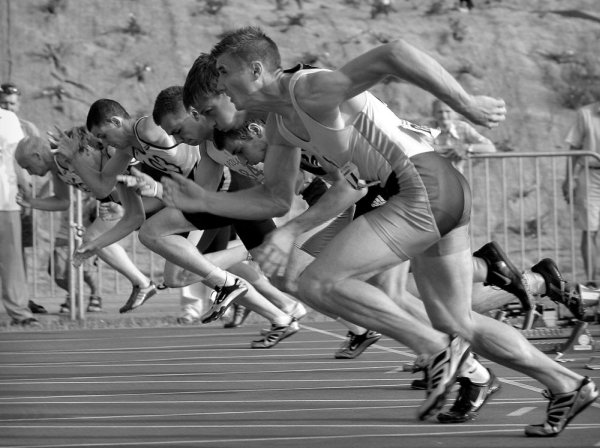yogabook / movement physiology / sprinting

See also the explanatory comparative article on the different types of locomotion on two legs. Sprinting is the forced to maximally forced version of running without the requirement for a sufficient real-time supply of oxygen and is therefore by definition anaerobic. The sprint, which is designed for (at least largely) maximum speed, has a smoother centre of gravity curve than the other three variants (walking, jogging, running). Compared to running, it is mainly the stride frequency that is increased, much less (often hardly any) the stride length. At maximum speed, up to 4 steps per second are achieved, i.e. 240 steps per minute, which cannot be sustained for longer than about 80 metres. In contrast, depending on the running style, the stride frequency for running is more in the range of barely 150 to max. 180 strides per minute. Running and even more sprinting is a highly intensive activity and requires slowly building up training with the correct technique if it is to be free or low in side effects in the long term. Malfunctions or misalignments of the musculoskeletal system and muscular imbalances can cause disorders. The most common ones are listed with details of their triggers, if known:
- Osgood-Schlatter disease: Overuse
- PHT (Proximal Hamstring Tendonipathy). Dispositional weakness, overuse
